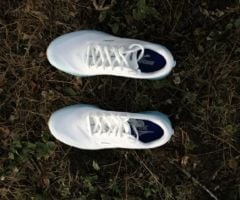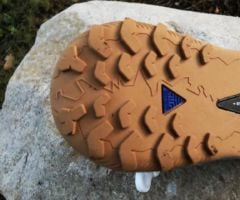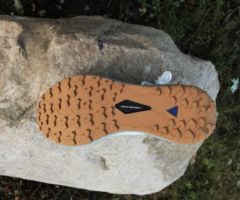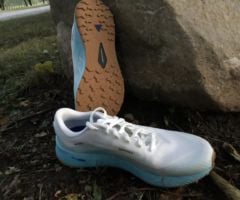Review: Brooks Catamount
This expert review is written by
Henry Howard
Ultra runner and certified running coach.Now living and running in Indiana, he has completed more than a dozen marathons and is a regular age-grouper in shorter distances.
Weight
Heel-to-toe drop
A lower drop (0mm - 5mm) promotes running on mid-foot and fore-foot, while higher drops (8mm - 12mm) are more traditional and meant to support a heel-striking gait.
Quick overview
Best for
Terrain
Grip
Cushioning
Pros and cons according to our running expert
Pros and cons according to our running expert
- Rocket-fuel fast
- Light yet firm midsole
- Very comfortable
- Breathable upper
- Not well-suited for technical terrain
- Foothold can be sketchy
- Colors not ideal for mud and dirt
Our verdict
While the Catamount is ideal for pushing the pace and handling road-to-trail transitions, it is clearly not meant for more than moderate or challenging terrain or climbs.
Introduction Brooks Catamount

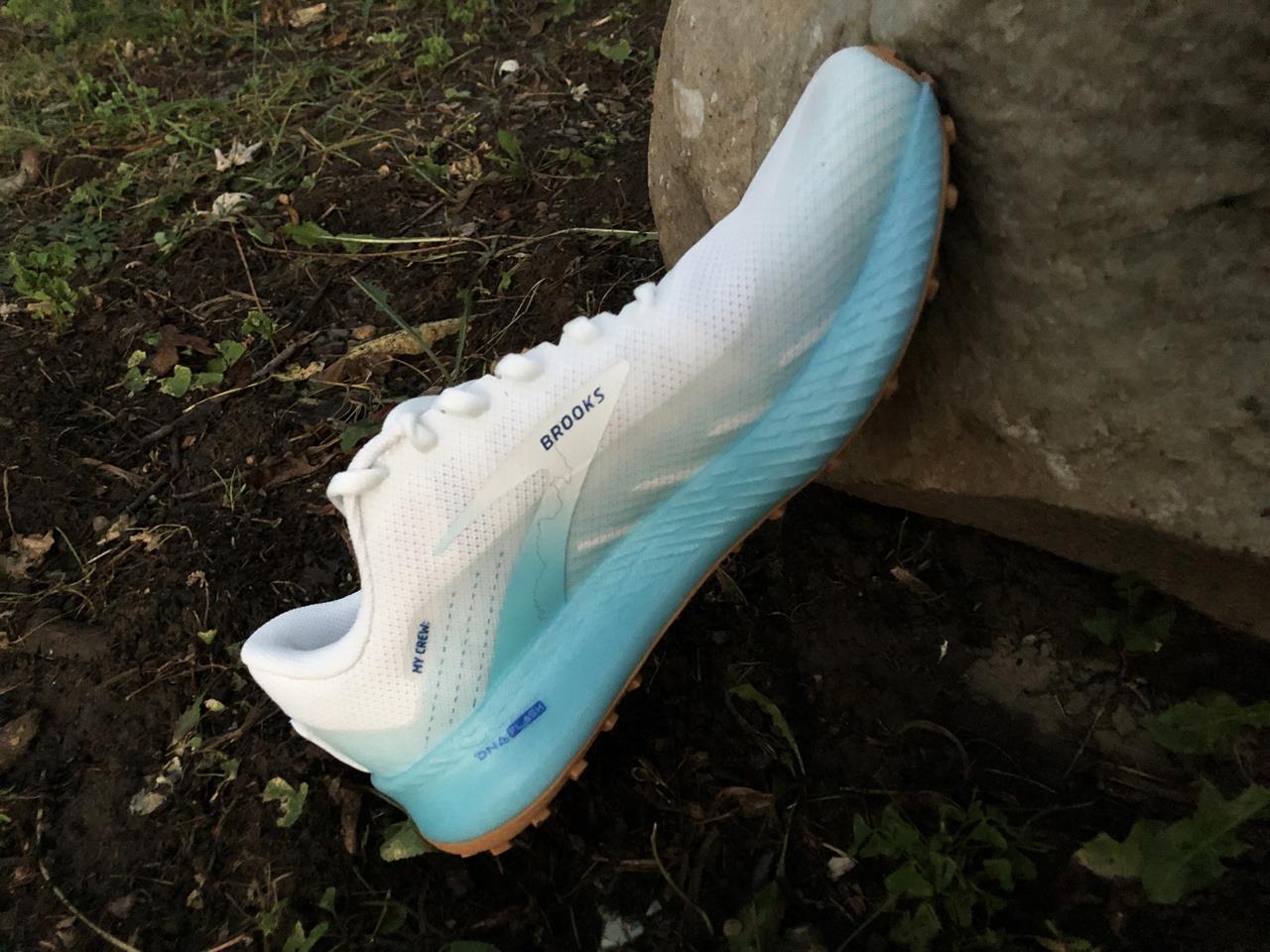
Brooks Catamount – Medial Side
The Brooks Catamount caught my eye immediately when pulling it out of the box. Its white and light blue design does not evoke imagery most often associated with shoes made for trail running.
Impressions Brooks Catamount


Brooks Catamount – Pair
However, Brooks has created a light and nimble trail shoe built for speed on easy and moderate trails. A men’s size 9 is 9.5 ounces while a women’s size 8 is 8.5 ounces.
The Catamount provides an airy, yet secure feeling and an upper with a good amount of cushioning.
Brooks uses its DNA Flash technology for this shoe which it has also used in the Tempo and Hyperion Elite 2.
Nitrogen is infused into the midsole compound to give it more zing yet less weight.
With a 6 mm drop, the Catamount’s engineered midsole, lightness and responsiveness combine to let the runner test his or her limits on smooth trails, bike paths and road-to-trails.
For a shoe designed with speed in mind, the Catamount does offer an appropriate amount of protection.
Protection Brooks Catamount

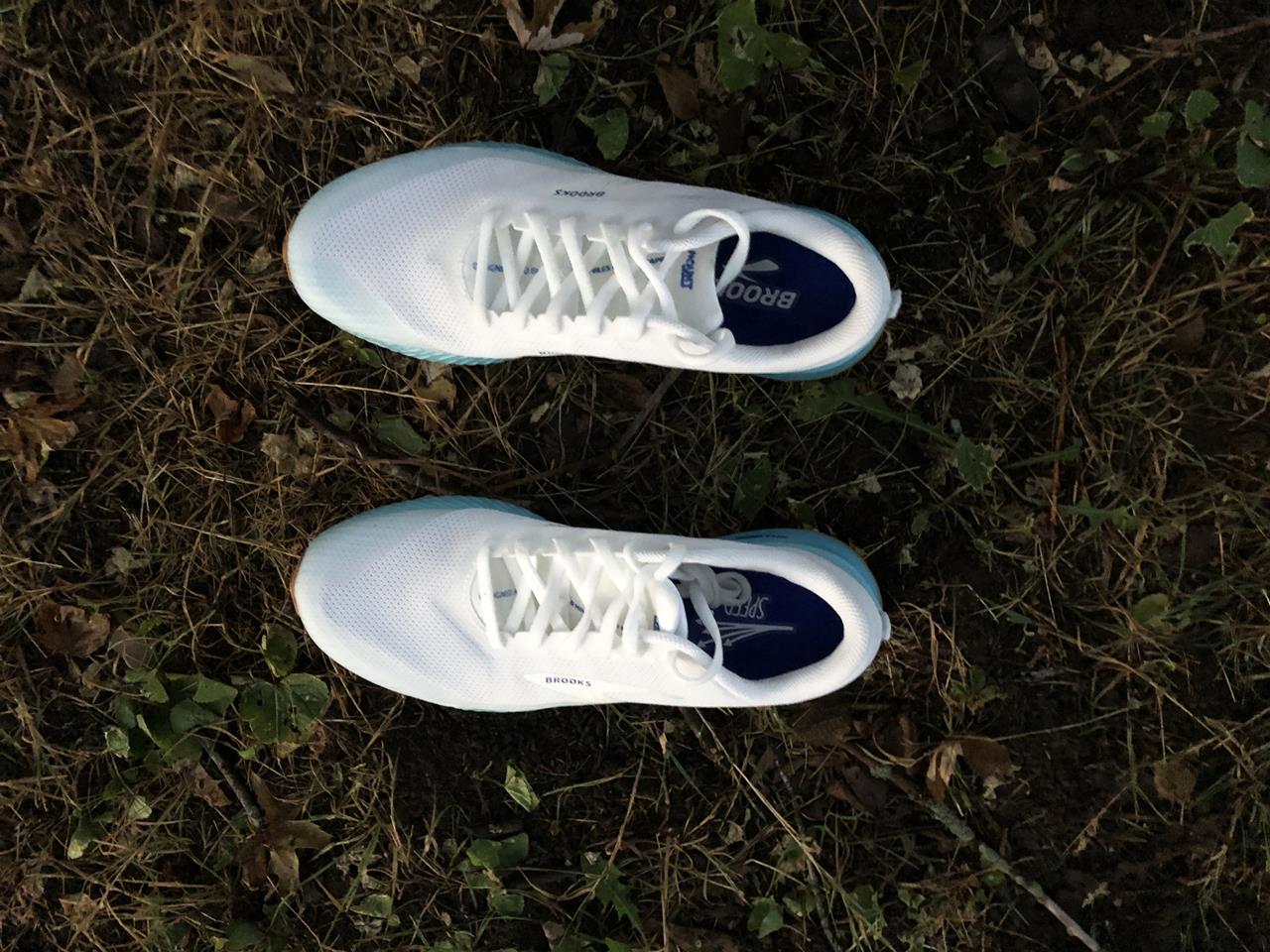
Brooks Catamount – Top
Overall, there is plenty of protection for easy and moderate trails. Runners will feel a sense of confidence with the 3.5mm lug outsole and a hardened EVA rock plate.
One thing that surprised me about the Catamount was the ample toe box.
Like other new shoes, it provides the toes some room to breathe and expand without feeling spacious like an Altra or others with an intentionally wide toe box.
The Catamounts have a thin tongue and minimal laces. At first glance, that combination would seem unsuitable for a trail shoe upper.
However, the dense yet mesh similar to the Salomon Sense Pro 4, and series of thin overlays work well to provide adequate protection.
Durability Brooks Catamount

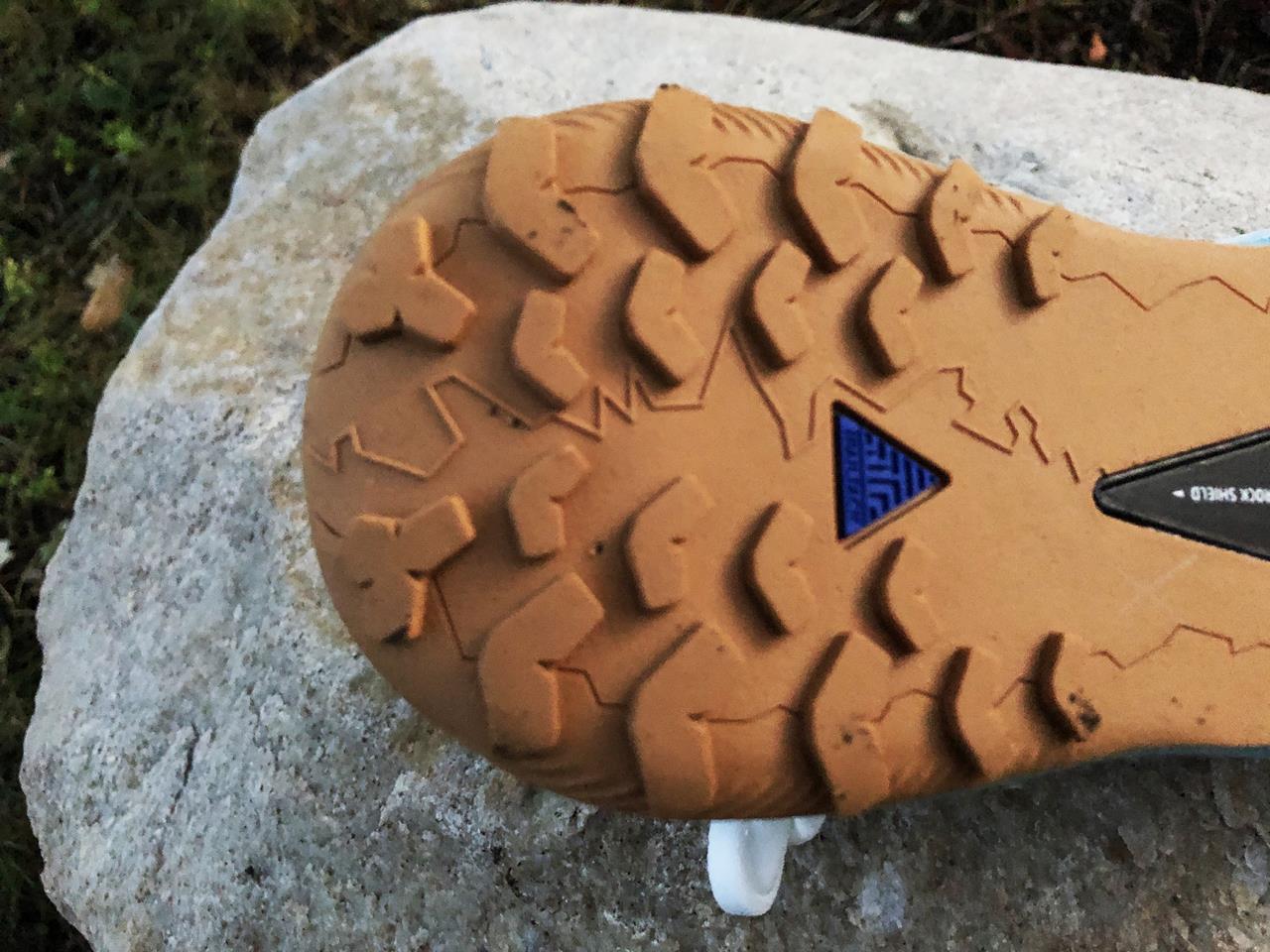
Brooks Catamount – Sole
At the 50-mile mark, durability seems to be average. The majority of my miles have been on cross-country courses featuring grassy sections, single-track trail and some grassy sections.
Additionally I run about 1.5 miles roundtrip to and from the XC course on roads/sidewalks.
As it does with other shoes, Brooks uses TrailTack sticky rubber with a Ballistic Rock Shield of hardened ESS EVA and 3.5mm lug pattern.
While the lugs are on the smaller side — again, these are built for speed on flat trails not plodding through mud – they do provide a decent grip on basic trail obstacles.
Loose rocks, a root or wet surfaces primarily.
However, the few times when I have taken the Catamounts to more challenging terrain, they have shown their weakness. They simply do not capably handle even moderately steep terrain and loose footing.
Responsiveness & Speed Brooks Catamount


Brooks Catamount – Heel
So you want to go fast? This is where the Catamounts rise to the challenge. For cross-country course running, they are among the best in class.
The responsiveness around corners or bends in the trail allows the runner to keep propelling forward without losing speed.
Among the workouts I have done in these shoes is short intervals of 10K pace.
The sneakers held up well and allowed me to hit that extra gear on various trail terrain — single track, dirt/gravel mix and grassy sections.
Going uphill presents a different challenge. If the climb is short and non-technical, these shoes will nail it. If it is longer and more technical, they are not the best option.
Comfort and Fit Brooks Catamount


Brooks Catamount – Medial Side
When it comes to comfort, we’ll circle back to the mesh upper one last time. It is among the things I especially like about this shoe. Not only is it comfortable, it holds form well.
The fit is secure in the heel and midfoot. The booty-style tongue is thin and the laces are on the shorter end but I never experienced an issue with the lacing or securing the foot.
The heel collar is moderately padded and the counter combines flexibility and firmness.
Conclusion Brooks Catamount


Brooks Catamount – Closeup
The Brooks Catamount is an outstanding and fast ride for shorter trail runs and races. It provides a good balance of several key factors — spring, response, cushion and comfort.
If you are looking for a fast shoe for easy to moderate terrain, the Catamount is definitely one to consider.
It complements other Brooks models like the Cascadia and Caldera, which are designed to handle more technical trails.
If you are a Brooks fan, this would round out your collection nicely, giving you a great option for midweek speed work on trails, or a performance shoe for a fast run, race or FKT attempt up to roughly a half marathon distance.
The Catamount is in the same class as several other recent launches, including the Hoka One One Torrent 2 and the Nike Kiger 6.
The Torrent 2 is just a little lighter while the Catamount has more stack height. While the Torrent 2 does not have the cushioning that Hoka generally offers, it feels better cushioned than the Catamount.
The Torrent 2 also has larger, more aggressive lugs. I would pick the Torrents over the Catamounts.
The Kiger 6 is incredibly fast even though it is a little heavier than the Catamounts. The Kiger 6 performs better when encountering loose traction on the trails and it also has a better foothold.
That said I have experienced foot pain when running in the Kigers past the 10K mark.
To me, the shoes are very comparable and I would likely choose the Kigers for a 10K or under fast race on easy trails and the Catamounts for a half marathon distance on similar terrain.
This page contains affiliate links. As an Amazon Associate I earn from qualifying purchases.
Write a review
About the Brooks Catamount
Your review was successfully posted.
If your review wins, you will get a notification by email.
Winner will receive Amazon gift card of $50 or equivalent in other currency.












